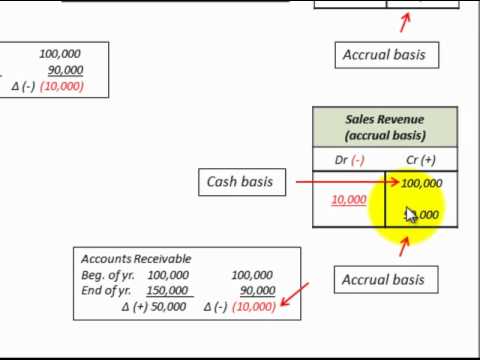
You can print payroll reports using its payroll feature and make any adjustments to bank reconciliation exercises and answers the general ledger within the same software. To get started, you’ll need reports from both the general ledger and the payroll software. In payroll liabilities, the amount that we are supposed to give to our employees comprises the payroll taxes. Often it is seen that business owners around the world hold the payroll taxes from their employees.
Remember, since you’re reconciling liability accounts, the funds should remain in the account until you pay them out. Any funds that aren’t routinely cleared from your payroll accounts, like retirement benefit premiums that are paid out monthly, indicate there may be a problem. For instance, a bill payment may be late, or a transaction could be booked to the wrong account(s).
Common scenarios that can be corrected by a liability adjustment
Understanding these interface disparities is crucial for efficient payroll management. By setting up scheduled payments, businesses can ensure that their payroll liabilities are consistently funded, avoiding potential penalties or interest charges due to late payments. This also promotes financial planning and organization, as it allows for the predictable allocation of resources for upcoming tax liabilities.

How to Pay Payroll Liabilities in QuickBooks Desktop?
When reconciling payroll, many QuickBooks Payroll users are concerned with aligning their payroll records to their bank statements. There are, however, important related tasks, like learning how to reconcile unadjusted trial balance example purpose preparation errors payroll liabilities in QuickBooks. This consists of researching outstanding payroll debts, like payroll taxes or benefit premiums, that haven’t cleared your general ledger accounts in a reasonable time frame. You may do this annually, but doing it monthly saves more time in the long run.
- For example, you’ll have payroll liabilities for wages you owe to employees and taxes withheld from their checks when you do pay them.
- Furthermore, the payroll liabilities balance report holds the information regarding the payroll items allocated to a liability account, deductions, and many company contributions.
- The IRS and state agencies have specific deposit schedules for payroll taxes—adhere to these schedules to avoid penalties and interest.
- No, if you do not run payroll as part of your business you do not need to file Form 914.
- Its payroll service and accounting features are integrated, which helps ensure that your payroll data is accurate in both systems.
Step 1: Create an asset account to track the installment
It’s a liability even if an employee hasn’t taken any time off during the pay period. It’s a liability because employers are responsible for paying out PTO when an employee leaves the company or resigns. In a simple sense, liability is the particular amount that we are supposed to pay someone, however, we haven’t paid them yet.
Payroll taxes and insurance
The first thing you need to do is make a list of all your payroll liability accounts. If you expense still need to set them up, use our tutorial on setting up a chart of accounts in QuickBooks. QuickBooks Online offers a cloud-based interface that allows users to access payroll features from any location with internet connectivity. With the automation of these payments, accounting teams can focus on other critical financial tasks, enhancing overall efficiency and reducing the burden of manual payment management.
Understanding these disparities is essential for optimizing financial and tax reporting accuracy. When comparing paying payroll liabilities in QuickBooks Online and QuickBooks Desktop, distinct differences emerge in the user interface, available payment options, and management of tax deadlines. These variations impact the overall experience and efficiency of payroll liability management. With detailed reporting capabilities, businesses can track and verify the accuracy of their tax payments, enhancing overall financial management and accountability.
Payroll processing is complex, meaning you’re likely to struggle to stay on top of the process. A very important part of managing payroll is tracking and paying payroll liabilities. Managing payroll is one of the top challenges for small business owners, according to a Justworks and The Harris Poll survey. The reporting capabilities of QuickBooks Online and QuickBooks Desktop for payroll liabilities management differ in terms of financial reporting and tax-related functionalities.
Implementing scheduled liabilities payments in QuickBooks Online streamlines tax reporting and compliance adherence by automating the timely allocation of funds towards payroll liabilities. This feature minimizes the risk of missed payments and facilitates accurate tax filings. For small business owners, the procedure involves accessing the ‘Pay Liabilities’ option under the ‘Employees’ tab in QuickBooks Desktop. Here, the user can select the appropriate liability to record a manual payment, enter the payment details such as check number, payment date, and amount. This ensures that all tax obligations are properly recorded and helps in reconciling the financial records. It plays a vital role in maintaining a clear audit trail for tax deposit tracking, which is crucial for financial transparency and compliance.
Accrued payroll includes liabilities a business owes for payroll but hasn’t paid yet. To streamline the process of paying payroll liabilities in QuickBooks, efficient payroll processing, meticulous tax deposit management, and proactive compliance adherence are integral. These tips enhance overall payroll management and mitigate potential tax-related issues. With QuickBooks Online, businesses can easily set up recurring payments for various payroll obligations such as wages, taxes, and benefits. This not only ensures that these payments are made on time but also simplifies the tracking and reporting process.